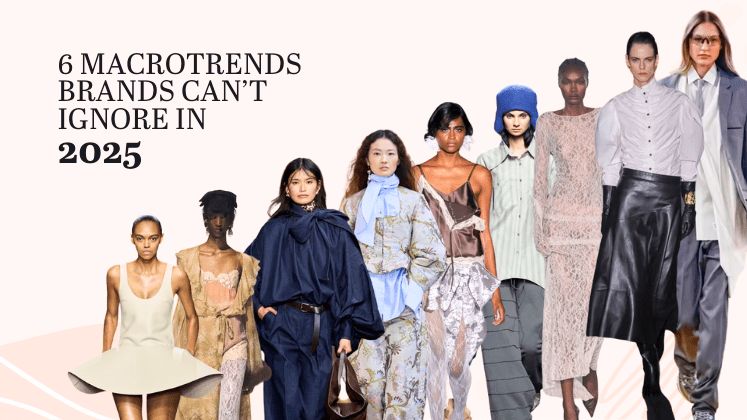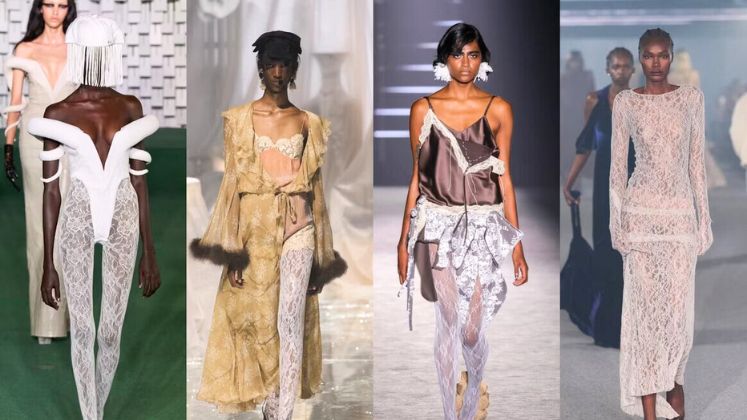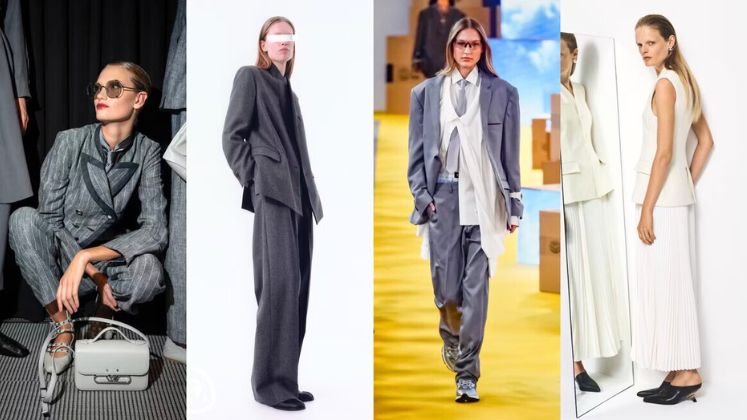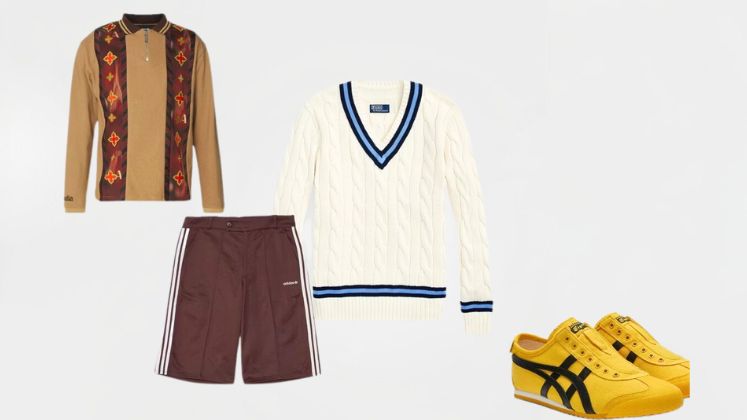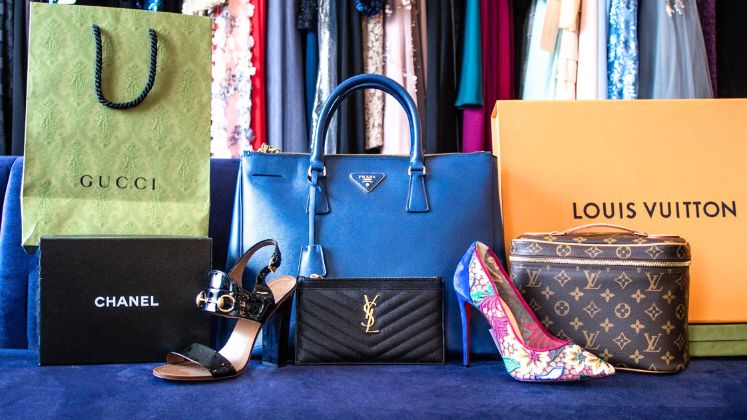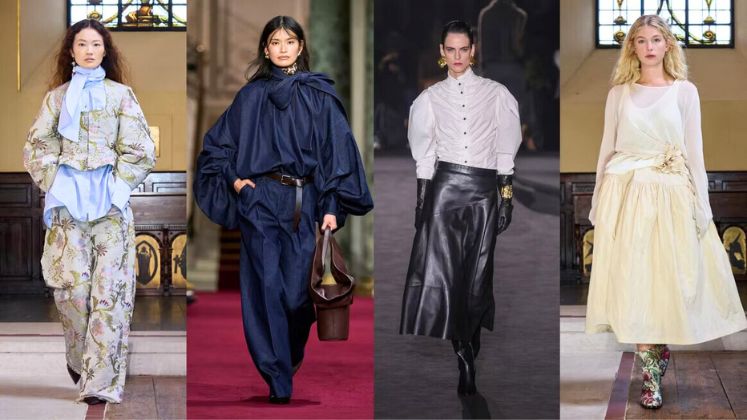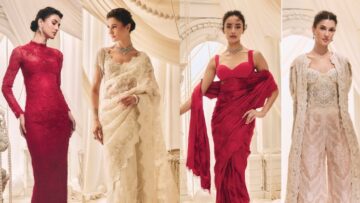In an era where rapid cultural shifts, economic uncertainties and evolving consumer mindsets dictate the fashion landscape, it has become pertinent for brands to stay agile to remain relevant. The key to longevity lies in understanding not just what consumers are wearing but why they are gravitating toward specific aesthetics.
As 2025 unfolds, 6 macro trends emerge that are reshaping design narratives, retail strategies and brand storytelling— offering both creative and commercial opportunities for industry stakeholders.
From nostalgia-driven escapism to the resurgence of power dressing, these trends reflect deeper societal undercurrents. Gen Z’s search for romanticised era fuels the return of Victorian-inspired fashion, while the need for stability and authority has redefined businesswear into a statement of quiet confidence. Simultaneously, fashion continues to serve as a tool for self-expression, with exaggerated silhouettes and experimental styling allowing consumers to showcase their individuality without inhibition. A redefinition of sensuality is also underway, where sheer fabrics and delicate lace shift eroticism from overt sexuality to a statement of empowerment. Lastly, the concept of luxury is evolving into an understated, contemporary aesthetic that seamlessly blends heritage craftsmanship with modern day sensibilities. Read on to discover.
LACE, TRANSPARENCY AND POWER: HOW FASHION IS EMBRACING SENSUALITY
The evolution of sensual fashion reflects a broader cultural shift towards body positivity and inclusivity. As per Zalando, searches for lace lingerie have increased by 140 per cent, while demand for sheer, body-conscious garments has surged, highlighting a move towards self-assured sensuality rather than traditional ideologies associated with allure.
Transparency, corsetry and intricate lace details define this aesthetic, celebrating the body rather than concealing it.
The emergence of ‘Sheer Confidence’ introduces delicate yet empowering designs— think strategic placed sheer panels, delicate corsetry, sculptural lingerie-inspired tops that enhance the boy’s natural curves, intricate black lace details and gender-neutral sensuality that defy outdated beauty standards. The strategically crafted transparencies of tops and bodysuits create a visual effect that evoke mystery and self-assuredness. Brands such as Ludovic de Saint Sernin, whose sensual aesthetic has seen a staggering 5,110 per cent increase in engagement, serve as a great example of the growing consumer appetite for uninhibited, self-expressive fashion.
To remain relevant, brands must balance sensuality with sophistication, offering versatile designs that empower wearers across all body types. The fusion of lingerie with ready-to-wear, thoughtful layering techniques and multifunctional garments will drive this trend forward. The rise of ethical lingerie production and sustainable sheer textiles presents an opportunity to merge desirability with responsible fashion practices.
| Searches for lace lingerie have increased by 140 per cent, while demand for sheer, body-conscious garments has surged, highlighting a move towards self-assured sensuality rather than traditional notions of allure. |
POWER DRESSING 2.0: THE NEW-AGE WORKWEAR REVOLUTION
The redefinition of workwear mirrors broader societal transformations as professionals navigate evolving workplace dynamics. With a 70 per cent increase in searches for tailoring, alongside an 86 per cent rise in demand for double-breasted jackets and a 47 per cent uptick in loafers, structured silhouettes are reclaiming their place in modern wardrobes.
More than just a mere stylistic revival, this trend is a response to the growing desire for stability and authority in uncertain times. The return of 1980s power dressing – characterised by oversized blazers, sharp tailoring and defined shoulders, offers a blend of professionalism and adaptability. However, modern businesswear is no longer confined to rigid formality; but instead, it embraces fluidity with relaxed silhouettes, hybrid materials and versatile layering techniques.
Brands that introduce performance tailoring, breathable fabrics and modular designs will lead this evolution. Gender-fluid cuts, multifunctional suiting and accessories that seamlessly transition from work to leisure will define the new professional wardrobe. Additionally, the integration of smart textiles and AI-driven personalisation will elevate business attire from a symbol of tradition to an adaptive, future-forward fashion statement.
| With a 70 per cent increase in searches for tailoring, alongside an 86 per cent rise in demand for double-breasted jackets and a 47 per cent uptick in loafers, structured silhouettes are reclaiming their place in modern wardrobes. |
BOLD, UNAPOLOGETIC, UNIQUE: SELF-EXPRESSION THROUGH EXAGGERATED SILHOUETTES
Gen Z continues to push the boundaries of self-expression, using fashion as a vehicle for identity exploration. The macrotrend ‘Supreme Self’ champions individuality through bold silhouettes, unconventional layering and a rejection of aesthetic conformity.
This movement manifests in ‘Playful Proportions’, where exaggerated volumes, unusual cuts and contrasting textures transform fashion into a statement of personal narrative.
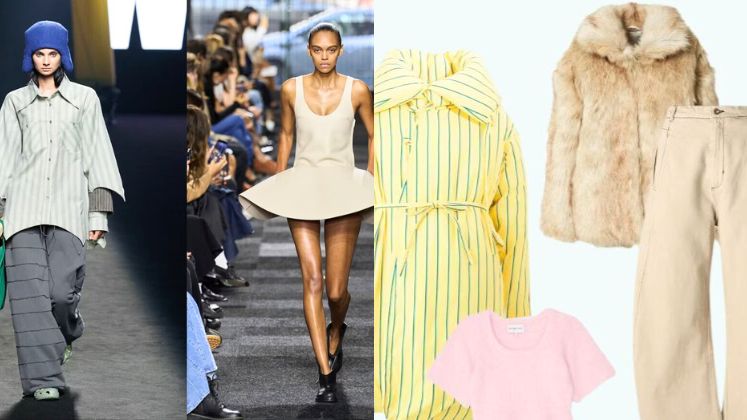 Voluminous outerwear, oversized trousers and asymmetric hemlines redefine traditional structures, while a mix of distressed denim, tactile embellishments, embossed florals and fluffy fabrics in pastel shades amplify the sense of experimentation. This era of fashion gives rise to a no-rules approach, where gender norms are fluid and every garment serves as an extension of personality.
Voluminous outerwear, oversized trousers and asymmetric hemlines redefine traditional structures, while a mix of distressed denim, tactile embellishments, embossed florals and fluffy fabrics in pastel shades amplify the sense of experimentation. This era of fashion gives rise to a no-rules approach, where gender norms are fluid and every garment serves as an extension of personality.
The demand for unique, one-of-a-kind pieces has prompted brands to explore customisation, upcycling and digital fashion experiences. AI-generated designs, virtual dressing rooms and NFT-based collectibles are paving the way for hyper-personalised wardrobes. As consumers increasingly seek clothing that aligns with their identity rather than trends, brands that prioritise exclusivity, storytelling and interactive shopping experiences will thrive in this era of self-exploration.
MODERN HERITAGE: TIMELESS ELEGANCE FOR THE NEW ERA
A shift towards refined simplicity and quiet sophistication characterises the ‘Modern Heritage’ movement. Consumers are increasingly drawn to timeless investment pieces, with a strong preference for tailored waistcoats, varsity jackets and refined casualwear. This reflects a broader desire for longevity and craftsmanship over fast-paced trends.
Proof of this also lies in the Spring/Summer 2025 collections that showcase a strong presence of reinterpreted basics such as minimalist varsity jackets and waistcoats paired with trainers.
Minimalist luxury blends traditional elegance with contemporary ease, ensuring that every piece holds enduring value. Furthermore, the resurgence of high-quality fabrics from structured wool to cashmere blends, highlights an appreciation for tactility and refinement.
Accessories are also similarly evolving, with artisanal footwear, leather goods and subtly branded statement pieces redefining aspirational style.
Brands that champion timeless quality, ethical production and durability will secure long-term consumer trust.
THE RESALE REVOLUTION: LUXURY’S SECONDHAND MARKET IS REDEFINING EXCLUSIVITY
The luxury resale market is no longer a niche segment but a fast-growing pillar of the high-end fashion industry. Driven by sustainability concerns and shifting consumer behaviour, the global pre-owned luxury sector is expected to reach US $ 51 billion by 2026, growing at 10 per cent -15 per cent annually, as per data released by Bain & Company. Gen Z and Millennials are leading this shift, using resale as a means to access designer goods while adhering to eco-conscious values. This democratisation of luxury is challenging long-held notions of exclusivity, as pre-owned pieces become more desirable and mainstream.
Luxury brands, once resistant to resale, are now actively engaging in the secondary market, with Kering’s investment in Vestiaire Collective and Gucci’s partnership with The RealReal highlighting a strategic shift toward circular fashion. In addition to this, advancements in blockchain-based authentication, AI-powered condition assessment and digital ownership certificates are enhancing trust and transparency. New ownership models such as fractional luxury investments and subscription-based access to high-end goods are further reshaping how consumers interact with premium fashion.
ESCAPIST FASHION: WHY ARE CONSUMERS TURNING TO THE PAST FOR STYLE INSPIRATION
The uncertain and fast-paced nature of the modern world has given rise to a renewed fascination for historical fashion, particularly amongst Gen Z consumers who seek escapism via their choice of clothing. This longing for romance and nostalgia is fuelling a resurgence of Victorian influences, marked by dramatic silhouettes, intricate embroidery, corsetry and pearl embellishments.
Recent data shared by Berlin-based online retailer Zalando, indicates a 156 per cent increase in searches for ‘Regencycore’
attire, fuelled by the success of historical dramas and social media’s embrace of vintage aesthetics. However, for brands, the key to longevity in this trend lies in modernisation— rethinking traditional elements through a contemporary lens.
This includes blending structured corsets with relaxed tailoring, using sustainable materials for lace and embellishments, incorporating traditional elements like corsetry or bows with a modern approach and even integrating Victorian motifs into categories such as streetwear.

